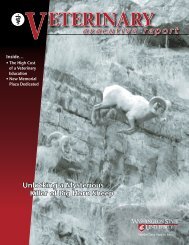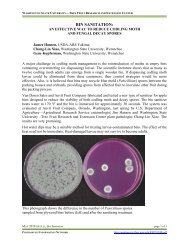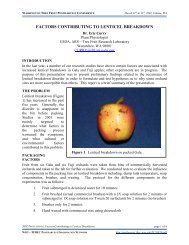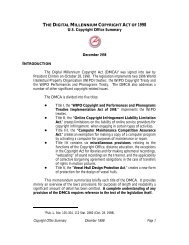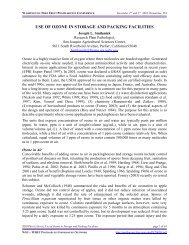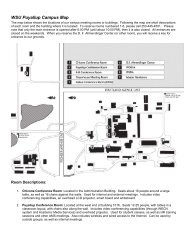No-Till: The Quiet Revolution - Research - Washington State University
No-Till: The Quiet Revolution - Research - Washington State University
No-Till: The Quiet Revolution - Research - Washington State University
Create successful ePaper yourself
Turn your PDF publications into a flip-book with our unique Google optimized e-Paper software.
[history]Agriculture milestones<strong>The</strong> roots of both no-till and tillage-based farmingmethods run deep, but eventually the latterapproach predominated, thanks to the evolution ofthe plow. Over the past few decades, however,advances in herbicides and machinery have madeno-till practical on a commercial scale.[THE AUTHORs]8000 B.C.Planting stick, the earliest version of no-till, enablesthe planting of seeds without cultivation.Scratch plowthe earliest plow, clears a path through the ground cover and createsa furrow into which seeds can be placed.6000 B.C.Draft animals replace humans in powering the plow.3500 B.C.Plowshare, a wedge-shaped implement tipped withan iron blade, loosens the top layer of soil.1100 A.D.?Moldboard plowhas a curved blade (the moldboard) thatinverts the soil, burying weeds and residues.Mid-1800sSteel moldboard plowinvented by John Deerein 1837, is ableto break upprairie sod.Early 1900sTractorscan pull multiple plows at once.1940s –1950sHerbicides such as 2,4-D,atrazine and paraquat enable farmers to manageweeds with less tillage.1960s<strong>No</strong>-till seedersslice open a small groovefor seeds, keeping soildisturbance to a minimum.David R. Huggins (left) is a soilscientist with the USDA-Agricultural<strong>Research</strong> Service, Land Managementand Water Conservation<strong>Research</strong> Unit in Pullman, Wash.He specializes in conservationcropping systems and their influenceon the cycling and flowof soil carbon and nitrogen. John P.Reganold (right), Regents Professorof Soil Science at <strong>Washington</strong><strong>State</strong> <strong>University</strong> at Pullman,specializes in sustainable agriculture.This is his third article forScientific American.it must also be done sustainably. Farmers needto generate adequate crop yields of high quality,conserve natural resources for future generations,make enough money to live on, and besocially just to their workers and community[see “Sustainable Agriculture,” by John P. Reganold,Robert I. Papendick and James F. Parr;Scientific American, June 1990]. <strong>No</strong>-tillfarming is one system that has the potential tohelp realize this vision of a more sustainableagriculture. As with any new system, there arechallenges and trade-offs with no-till. Nevertheless,growers in some parts of the world areincreasingly abandoning their plows.Plowing AheadPeople have used both no-till and tillage-basedmethods to produce food from the earth eversince they started growing their own cropsaround 10,000 years ago. In the transition fromhunting and gathering to raising crops, ourNeolithic predecessors planted garden plotsnear their dwellings and foraged for other foodsin the wild. Some performed the earliest versionof no-till by punching holes in the land with astick, dropping seeds in each divot and then coveringit with soil. Others scratched the groundwith a stick, an incipient form of tillage, to placeseeds under the surface. Thousands of farmersin developing countries still use these simplemethods to sow their crops.In time, working the soil mechanicallybecame the standard for planting crops andcontrolling weeds, thanks to the advent of theplow, which permitted the labor of a few to sustainmany. <strong>The</strong> first such tools were scratchplows, consisting of a frame holding a verticalwooden post that was dragged through the top-STEWART HIGGINS <strong>Washington</strong> <strong>State</strong> <strong>University</strong> (Huggins and Reganold); wu hong epa/Corbis (scratch plow);ralf roletschek (moldboard plow); hugh talman Smithsonian Images (John Deere plow);lane lambert iStockPhoto (tractor); andy anderson (no-till seeder)72 SCIENTIFIC AMERICAN © 2008 SCIENTIFIC AMERICAN, INC.July 2008


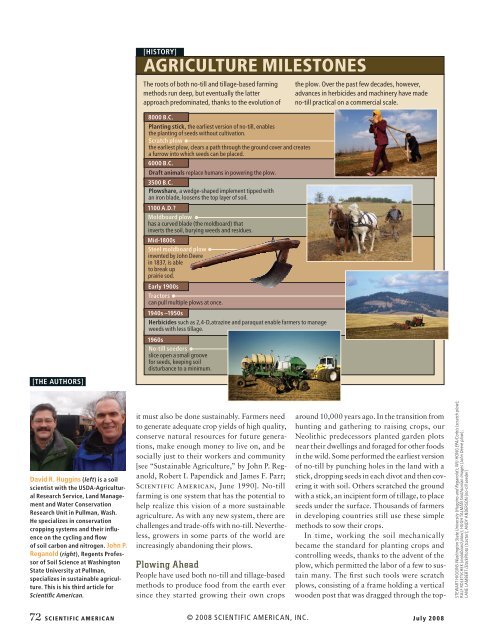
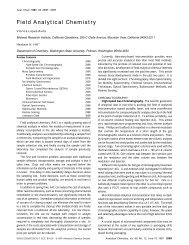
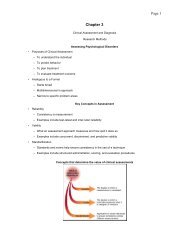
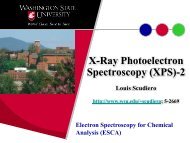

![Graduate School Policies & Procedures Manual 2011 - 2012 [PDF]](https://img.yumpu.com/50747405/1/190x245/graduate-school-policies-procedures-manual-2011-2012-pdf.jpg?quality=85)
